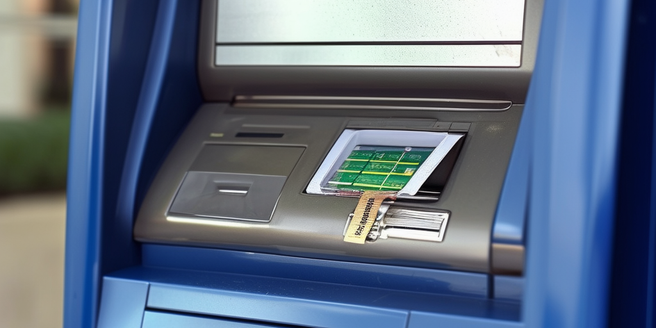
Understanding Credit Card Skimming
Credit card skimming is a type of theft where crooks use a small device to steal credit card information in an otherwise legal transaction. These devices are often discreetly placed over card readers in places such as gas pumps or ATMs, making them hard to spot. When a credit card is swiped through a skimmer, the device captures and stores all the details stored in the card’s magnetic stripe. The stripe contains the credit card number, expiration date and the credit card holder’s full name. Thieves use the stolen data to make fraudulent charges either online or with a counterfeit credit card.
Different Methods of Credit Card Skimming
Skimmers are often placed on ATMs or gas pumps as these machines are widely used and can capture a sizable amount of information in a short time. This type of fraud is increasing in prevalence due to the vast number of electronic transactions made daily. It’s a ruthless tactic commonly used by perpetrators looking to acquire sensitive financial data. Another method is using a ‘waiter skimmer’, a handheld device that’s portable and easy to hide, used predominantly in restaurants. Cyber skimming is also a growing issue, where software bugs are exploited to skim card data during online transactions.
Identifying Signs of a Skimmed Credit Card
Cardholders, particularly those using credit or debit cards, are often unaware of unauthorized access to their personal information until unexpected charges appear on their financial statements or they receive a unsettling call from their bank. To maintain their financial security, it’s important for individuals to be wary when using public devices like ATMs or gas pumps where card skimming, a form of digital theft, is common. It’s also prudent for cardholders to routinely scrutinize their bank statements for unfamiliar transactions, which could indicate fraudulent activities. Through regular checks, cardholders increase their chances of detecting any unusual activities, enabling them to report these transactions to their bank and prevent further damages, thus ensuring their financial security and limiting potential exploitation of their card information.
Impact of Credit Card Skimming on Individuals and Businesses
Credit card skimming severely impacts both individuals and businesses. When thieves fraudulently obtain credit card information during legitimate transactions, individuals suffer significant financial losses. Businesses, too, suffer from this harmful practice. They face increasing chargebacks where money must be returned to consumers after fraudulent transactions. This not only creates direct financial burdens but also chips away at customer trust – a critical component for any successful business. Customers may start questioning the security of their data, potentially causing them to take their business elsewhere. This loss of trust can also impact the company’s reputation, which is sometimes irreversible. In addition, the erosion of customer loyalty can negatively affect future sales and revenue. Therefore, credit card skimming doesn’t just hurt immediate revenue, but also long-term customer relationships and a firm’s overall standing.
Best Practices to Prevent Credit Card Skimming
Cardholders must safeguard their personal identification number (PIN) from potential thieves during transactions and regularly monitor their account statements for irregular activities. They are advised to use bustling, well-lit ATMs to deter criminals.
Businesses also contribute to card transaction security by investing in advanced card readers, which enhances customer confidence and boosts their reputation. Despite this, businesses should maintain regular inspections of their card readers to spot any signs of tampering, preventing losses and protecting their customers’ financial information.
Technological Solutions for Preventing Credit Card Skimming
Technological advancements have led to the creation of EMV chip cards that are difficult to clone due to their superior security features, thus significantly reducing the prevalence of card fraud. Unlike traditional cards with magnetic stripes that contain easily capturable information, chip cards create a unique transaction code for each use, essentially negating skimming. Card reader and point of sale (POS) terminal technology innovations further added automatic encryption, scrambling the data flow between the card and card reader, rendering skimming devices useless. The introduction of NFC technologies in contactless payment systems offers additional protection by enabling transactions without physical contact to payment terminals, drastically reducing the risk of card details compromise. These advancements in payment technology mark notable progress in combating card fraud, giving cardholders a secure purchasing experience.
